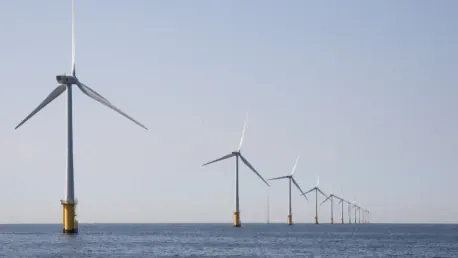Challenges loom large for East Coast states in the U.S. as they strive to meet their clean energy mandates and reduce carbon emissions through offshore wind power projects. These states, which include Connecticut, Maine, Maryland, Massachusetts, New York, North Carolina, Rhode Island, and Virginia, have integrated offshore wind power into their energy grids through specific legal mandates and laws. However, with the incoming administration of President-elect Donald Trump, who has historically expressed strong opposition to offshore wind, significant uncertainty surrounds these initiatives. Cooperation from the federal government is essential, as the wind turbines are planned to be located in federal ocean waters, making federal approval and support a crucial factor for the success of these projects.
States’ Reliance on Offshore Wind Energy
The reliance on offshore wind energy is a critical strategy for multiple states to achieve their emissions targets and ensure energy sustainability. These states have tailored their policies toward this renewable energy source due to their limited land availability for onshore renewable energy projects. Offshore wind energy provides a viable alternative that addresses both environmental and spatial constraints. However, the impending administration change introduces potential challenges that could impede the progress of these projects. Donald Trump has frequently criticized offshore wind for its cost and impact on aesthetics, leading to fears that his administration could halt progress through means such as denying permits, canceling leases, stopping auctions, or retracting permits issued under the current administration.
Such federal hostility poses a direct threat to the planned offshore wind capacity that is essential to these states’ clean energy transition strategies. Without federal cooperation, states might struggle to fulfill their renewable energy commitments, leading to a potential delay in meeting their climate goals. Energy analysts and state leaders emphasize the urgency of the situation, recognizing that the feasibility of achieving immediate and near-term climate targets could be compromised without a collaborative federal approach. This dynamic highlights the intricate interplay between state ambitions and federal policy frameworks that govern the advancement of renewable energy projects.
Federal-State Dynamics in Environmental Policy
The overarching trend reveals a complex federal-state dynamic in environmental policy implementation, where states depend critically on federal cooperation for projects extending beyond state-jurisdictional waters. The political climate under Trump’s expected policies indicates that states may face significant delays and obstacles in their offshore wind projects. While state leaders intend to push forward with their plans, the anticipated federal opposition requires them to consider alternative renewable energy options like onshore wind and solar energy. This shift could potentially reshape energy strategies and necessitate adaptive measures to minimize setbacks and maintain momentum in clean energy transitions.
To navigate these challenges, states are focused on continuing preparatory work, such as enhancing their electrical grids and constructing turbine-ready ports. These steps aim to ensure rapid deployment of offshore wind projects once federal hurdles are overcome. The readiness to proceed with crucial infrastructure improvements underscores the resilience and commitment of states to their clean energy mandates, even in the face of potential federal resistance. As states bolster their preparedness, they hold out hope for future collaborations or changes in federal policy that would enable the fruition of their offshore wind ambitions.
Preparatory Work and State Commitment
Synthesizing perspectives from state lawmakers, energy analysts, and environmental groups reveals a nuanced understanding of the predicament faced by states reliant on offshore wind energy for their clean energy goals. State leaders remain steadfast in their commitment to these projects, recognizing their pivotal role in reducing carbon emissions and fostering energy independence. This resilience is evident in the various preparatory measures states are undertaking to minimize delays and ensure swift project execution once federal opposition subsides.
Key findings indicate that federal hostility under Trump’s administration presents a significant threat to the offshore wind industry’s growth. In response, states are exploring enhancements to other renewable energy sources like solar and onshore wind to diversify their energy portfolios and maintain progress toward climate goals. The strategic adjustments reflect a pragmatic approach to achieving clean energy transitions amidst regulatory and political hurdles. By maintaining readiness for eventual offshore wind development, states demonstrate their resolve to adapt and persevere in their pursuit of sustainable energy solutions.
Practical Implications and Strategic Adjustments
The article presents a balanced examination of the practical implications for state-level clean energy goals, avoiding extensive partisan debates and focusing on factual and potential procedural hurdles linked to federal-level permissions and cooperation essential for offshore wind projects. This approach ensures a clear understanding of the challenges, strategies, and implications outlined, offering a comprehensive perspective on the current situation faced by states.
In conclusion, states aiming to achieve clean energy transitions through offshore wind projects are bracing for potential confrontations with the federal government under President-elect Donald Trump. Federal hostility could significantly delay or disrupt these projects, forcing states to consider alternative renewable energy options to meet their climate goals in the interim. State leaders remain committed to their clean energy mandates, working on necessary preparatory aspects to minimize delays and advance their offshore wind agenda when feasible. The cohesive narrative built from the article presents a well-rounded understanding of the situation, underscoring the critical role of federal-state cooperation in transitioning to renewable energy sources.









